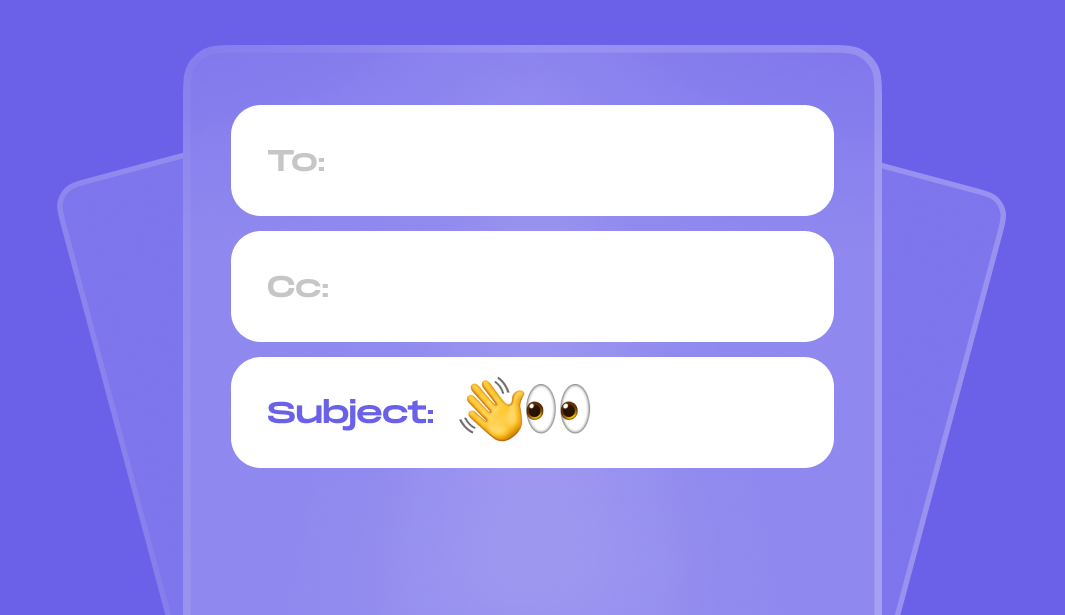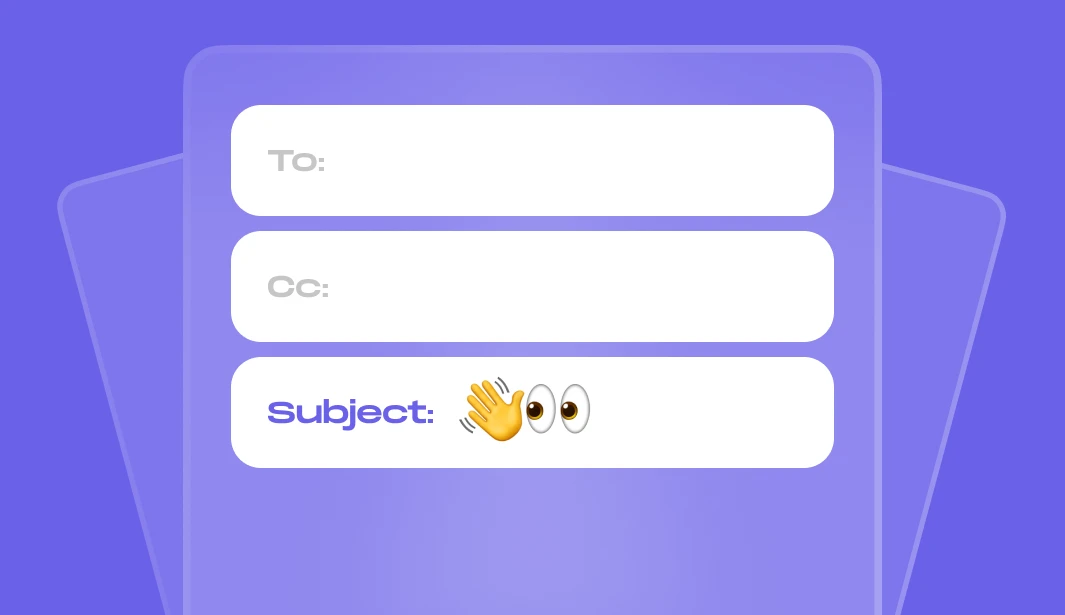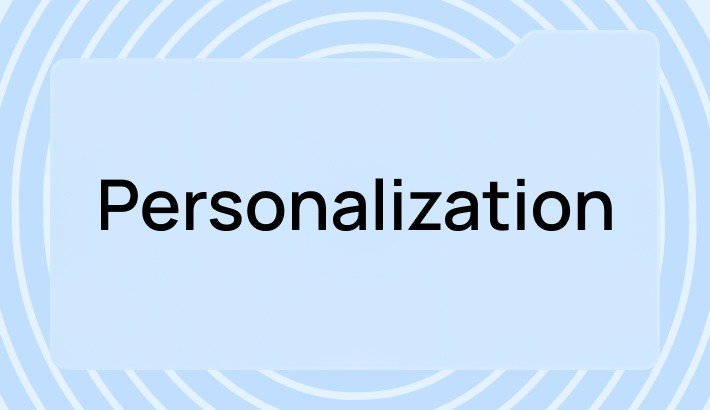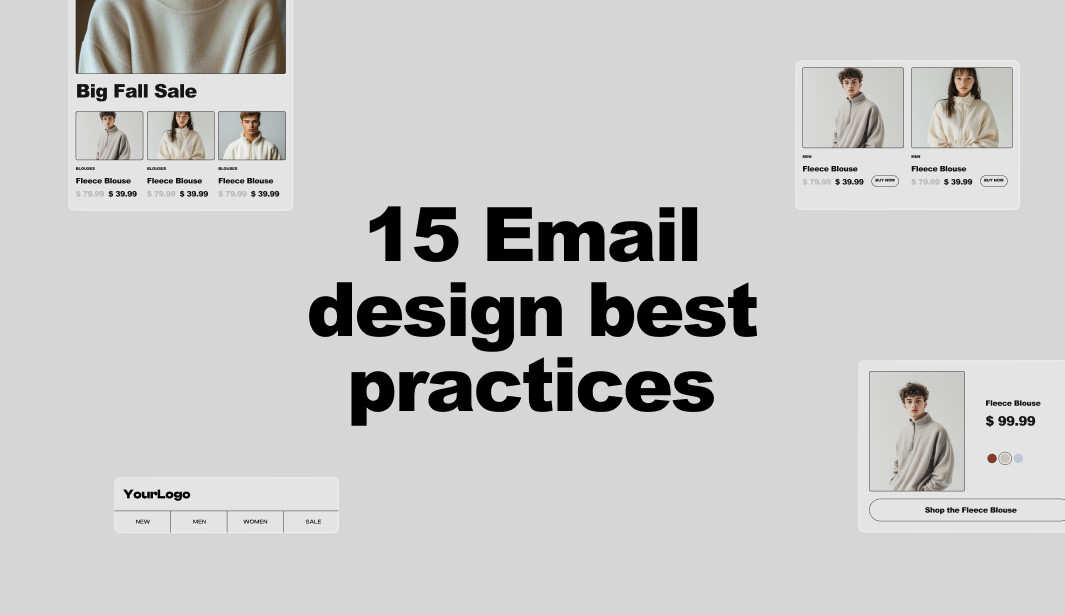

How to write engaging subject lines for reconnecting emails
Create your reconnecting emailsThis article examines definitions, steps, and best practices for creating catchy subject lines for reconnecting emails. We also review common challenges and provide email design examples for guidance and inspiration.
Do you still “circle back” to reconnect with your dormant audience or partners? This may be an appropriate time to try another, more effective way to catch up with them.
Spark the recipient’s curiosity, trigger an emotion, and make people feel your words using one element — the subject line. Do you have any ideas about how to significantly increase the open rates of your reconnecting emails? Our invited experts — MaryAnn Pfeiffer, Josh Spector, and Dan Siepen do!
Role of the subject line in reconnecting emails
When the sender is not immediately familiar, the subject line becomes a deciding factor. Its combination with the sender's name significantly improves your chances of reestablishing communication. The more personalized and catchy the subject line, the higher the chances of a reply.
The goal of the subject line in reconnecting emails
Reconnecting email subject lines are the first point of contact after a pause, so ideally, they should trigger positive emotions and remind people what they miss out on.
If the recipient sees a reason to revisit their professional relationship and opens your emails, the subject line plays its part well.
Subject line peculiarities for various types of reconnecting emails
Email subject lines depend heavily on the target audience and your intended goal. Do you strive to re-engage with valued customers or perform catch-up with colleagues?
I suggest that we review the main subject line differences.
Existing customers or subscribers
Your reconnecting subject line should align with the level of familiarity with your brand. A subject line that feels too familiar to an inactive subscriber may seem disconnected, while the overly promotional one might push away people who are not ready to commit.
So, how do you make subscribers compelled to open an email?
An element of intrigue fosters genuine interest in reconnecting or checking what this is about. Keep the aces for the email body to ensure the subject does not spoil the text.
Example: “Check your past year's impressive results.” A mention of a past conversation or experience with a mystery element is key to sparking curiosity and capturing the reader's attention.
Former colleagues
Email subject lines for colleagues need to do more than just offer to catch up—they should momentarily spark interest. This lets you reconnect with people naturally and engagingly. What is more there to desire?
If you are wondering how to combine all three, our invited expert would love to give some advice.
This formula is simple yet effective. What’s even better is that it can be adapted to different contexts. Whether you are reaching out for collaboration or a catch-up, this structure could be your foundation.
Each part of the subject line corresponds to a particular element, proving you may be precise and still hit all the points.
Example: “Remember project X? I’d love to discuss new ideas. Got 5 mins?” or “It’s been 2 months since [project name], let’s catch up.” Each subject line captures the recipient’s attention, evokes memories, and provides context.
Approaches to writing reconnecting email subject lines
Whether you are building relationships with colleagues or customers, a compelling subject line provides a gateway to your message.
Together with the invited experts, we have explored the most effective ways to write subject lines for reconnecting emails.
Consider relationships with the recipient
If you reconnect with someone familiar, try not to overuse variables. They do not add any personal touch but can make the subject line sound robotic.
However, if you are unsure whether your name rings a bell, provide details on mutual experiences in the past. Otherwise, your intent may be doubtful, and the email loses reasons to get opened.
The key is to consider who you are contacting and whether a few mentions of the name or company are relevant or can be extra.
Hint at the intent
A good email subject line creates curiosity but hints at your intent. Whether you want to share product updates or exciting news with customers or stay connected with an old contact, add a few catchy details to your subject line.
Here are email subject line examples targeted at colleagues and customers:
- variant for a client: This subject line gains the recipient’s interest by mentioning their impressive results and hints at the email's purpose.
- variant for a colleague: This subject line states the sender’s goal and mentions personal connections with the recipient;
Mention a benefit
In truth, a compelling reconnecting subject line is a combination of various approaches rather than just one rule. When you blend a clear benefit, intrigue, and concise phrasing, you get an informative and catchy subject.
A recent report explored particular words and their influence on open rates, so let’s have a look at the best wording choice:
- bonus: A subject line with the word “bonus” achieved a 44.51% open rate;
- prize: A subject line that mentions the word “prize” resulted in a 47.58% open rate;
- invitation: A subject line that includes the word “invitation” had a 56.76% open rate;
- offer: The word “offer” resulted in a 37.97% open rate for a subject line;
- discount: A subject line that mentioned a discount achieved a 39.83% open rate.
While a discount is not a remedy for all networking contacts, you may always highlight the benefit of reconnection.
Ask a question to provoke thoughts
Your perfect subject line does not have to be a narrative sentence. A question mark in the subject line achieves a 39.52% open rate, creates a sense of curiosity, and instantly grabs the recipient’s attention.
A follow-up email after a networking event or missed conversations suits these queries best.
Reference shared history or past interactions
A common ground with recipients in networking increases the chances of a reply by bringing them back to a shared experience.
Let’s compare a few personalized email subject lines and see which subject line provides more clarity:
- personalized variant: This attention-grabbing subject line works even in the crowded recipient’s inbox because it has a date reference, a mutual project, and a strong call to action;
- non-personalized variant: The same subject line for reconnecting email with a colleague becomes too vague without details. In this case, more symbols do not indicate more value.
Think of personalization as a way to rekindle memories, not just a name mention. This way, you remind recipients of your shared history and no longer appear as a stranger.
Respect silence
Bombarding recipients with reconnecting emails while they remain silent may be a straight way to spam. While dedication is appreciated, try to balance persistence to avoid negative associations with your name or brand.
A/B testing for reconnecting email subject lines
Unfortunately, there is no universal formula for success. While you may use recommendations as your subject linen backbone, every audience is unique, so experimenting is essential.
A/B testing helps determine which approach to writing subject lines resonates with your subscribers. The is when the Stripo AI subject line generator comes in handy.
In addition to creating subject lines that align with your needs, the generator offers alternatives for A/B tests. Here are the steps to use it:
- Go to the AI subject line generator.
- Enter the subject line in the text field.
- Specify the settings by choosing a style, capitalization, emoji usage, and language.
- Preview, copy, or improve the best subject line options.
A/B testing may be challenging when you constantly need to create new variants. Our AI subject line generator accelerates the process, so you only need to choose the best-fitting options.
Common subject line pitfalls
Even the best email ideas can fail if the subject line is not carefully crafted. From guilt-based practices and communication problems to improper approaches to personalization — these challenges significantly impact the results.
Guilt-based tactics
Guilt-based reconnecting subject lines can feel manipulative or even aggressive and often do more harm than good. Instead of improving engagement, these tactics may create a negative association with your brand, leading to opt-outs.
Overusing salesy or promotional elements
At first, subject lines with once-in-a-lifetime promises appear as a quick way to grab attention, but they often backfire.
Seeing the same aggressive promises every day eliminates the sense of exclusivity. Furthermore, subscribers may perceive these subject lines as any other and eventually may even report emails as spam.
Poor communication skills
Clarity and precision are essential in email communication. A subject line with poor grammar, awkward phrasing, or unnecessary complexity may reduce credibility. Readers who question the subject line are less likely to trust the email content.
Ineffective personalization
Overusing the recipient’s name or other static data does not attract much attention when tons of offers flood the inboxes. Try to work with emotions as they encourage an email open as much as any other approach.
Apart from the relevant personalization, ensure the data you use is correct, as this is another reason your emails may not be getting responses.
Mistakes in the variables negatively influence trust and can ruin decent email content. The key to effective subject lines is making them feel intentional and thoughtful rather than random and poorly implemented.
Overloading with details and prefixes
Apart from over-personalization, two more reasons prevent you from getting replies and opens:
- overloading with information: Subject lines up to 70 symbols achieve a maximum open rate of 43.38% open rate. This is a crucial factor on mobile devices;
- overusing “Re:” and “Fwd:” prefixes: While these prefixes often mimic active conversations, overusing or falsely adding them creates mistrust.
Your reconnecting emails will feel more intentional, relevant, and respectful if you address these concerns.
25 examples of subject lines to drive results
Now that you have walked through the creation steps and seen common pitfalls, we can move to the subject line examples for your email templates.
15 networking email subject line examples
Since there may be different reasons for networking, we have divided the following examples into two categories for your convenience: examples for colleagues and examples for business partners.
Examples for colleagues
Reconnecting with former colleagues could be a new beginning for collaborations, networking, or simply strengthening relationships.
- “Remember our success with [shared project]? Let’s reconnect.”
- “[Mutual connection] reminded me of our collab. Shall we catch up?”
- “[Recipient’s name], let’s collaborate on [new project name] and repeat our previous success.”
- “Got any ideas on [relevant industry news]? Let’s catch up!”
- “Our collab on [shared project] inspires me. Let’s revisit it.”
- “Celebrating [shared milestone]? Would love to catch up!”
- "[Recipient’s name], why not reconnect for a new project?"
- "Let's plan our next big success after [past project]."
For business partners
Reconnecting emails could be your way to transform short-term partnerships into long-term partnerships. These examples may inspire you to catch up with your business partners.
- “Let’s revisit [past project] and explore how we can collaborate on [new project].”
- “Big changes at [your company name]. Let’s collaborate!”
- “[Past project] was just a beginning. How about a collaboration on [new project]?”
- “We’ve achieved a lot with [previous collaboration]. Can we catch up?”
- “Let’s explore how [your company] and [recipient’s company] can grow together.”
- "Let's revisit our collaboration on [past project] and explore new opportunities."
- “How [new shared goal] could benefit [your company] and [recipient’s company].”
10 customer reconnecting subject line examples
Reconnecting emails are not always an aspect of networking; sometimes, they serve as a way to re-engage with customers.
We prepared examples of subject lines for this occasion:
- “Your feedback was key. Here’s how we’ve improved.”
- “[Recipient’s name], your success is still our priority. Let’s catch up.”
- "Let's repeat your [past year’s achievement] and see how you can beat it."
- “[Recipient’s name], have you seen [your company name] latest [product/service]?”
- “Time flies when you are preparing updates. Check out your absolute new favorites.”
- "[Recipient’s name], let’s make this year your best yet with [your company]."
- “[Your company] is evolving. Here’s what it means for you.”
- “[Recipient’s name], your results were outstanding. We have prepared key points.”
- “Your journey with us is what motivates us to grow. Here’s how you influence [your company].”
- “[Your company] has changed this past month. Let’s see what we achieved!”
Wrapping up
The subject line of the reconnection email is the first step in reigniting relationships with clients, former colleagues, or partners. Adding intriguing elements and questions or referencing a shared experience and a benefit can increase your open rates. Moreover, with A/B testing up your sleeve, you obtain the most effective options that are aligned with your audience.
We hope these tips and examples have inspired you to refresh your reconnecting subject lines and try new approaches. Good luck!












